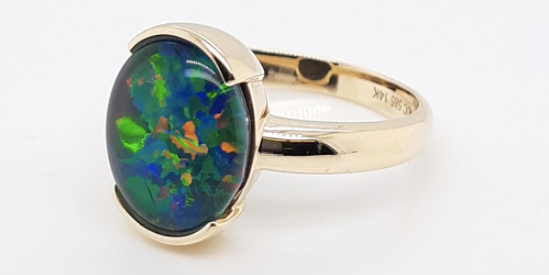- Joined
- Oct 23, 2011
- Messages
- 7,477
The easiest way to detect a doublet is to check the girdle. A doublet will have a perfectly even demarcation line between the opal and the backing and the opal section itself will be thin.
This opal looks like black opal and as such will often have potch as a backing. This can make it tricky to decide if it’s a natural backing or an “applied” backing. However if a natural black opal if you carefully examine the girdle you should see that the seperating line isn’t equal all the around the opal.
However it’s not unheard of people deliberately using natural potch as the backing to make it more difficult to detect.
Looking at the ring and the surrounding diamond halo I’d be inclined to believe it’s a solid opal not a doublet.

Thank you all! Would this be considered a black opal?
Yes! Nice one, too, You have the coveted red and great bright color play.
It's a lucky find.
*faint* Whatever it is... I think you should buy it!
Yes! Nice one, too, You have the coveted red and great bright color play.
It's a lucky find.

 australianopalcutters.com
australianopalcutters.com
Thank you all! Would this be considered a black opal?
Thank you all! Would this be considered a black opal?
